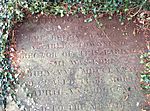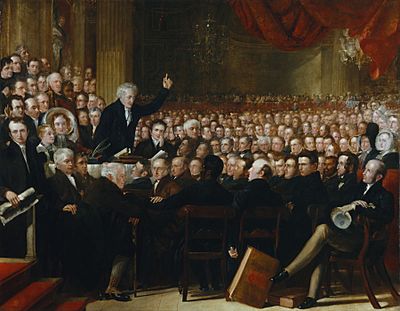Lucy Townsend facts for kids
Lucy Townsend (born Lucy Jesse; 25 July 1781 – 20 April 1847) was a British woman who worked to end slavery. People who fought to end slavery were called abolitionists. Lucy started the very first Ladies' Anti-Slavery Society in Birmingham, UK. It was called the Birmingham Ladies Society for the Relief of Negro Slaves. Even though slavery had been stopped in the UK in 1807, Lucy's group became a great example. Other groups in Britain and America copied her idea. These groups worked hard to end slavery in places like the West Indies and the United States. Many people believe that the work of British ladies' societies had a big impact around the world.
Early Life and Family
Lucy Townsend's family came from a place called Staffordshire. Her father, William Jesse, was a church leader at All Saints Church in West Bromwich. In 1807, Lucy married Rev. Charles Townsend. He was also a church leader in West Bromwich and was against slavery. Lucy and Charles had six children. They both believed that cruel sports and slavery were wrong.
Starting the Anti-Slavery Movement
Lucy Townsend started the first Ladies' Anti-Slavery Society in Birmingham on 8 April 1825. She and Mary Lloyd were the first leaders of this group. It was first called The Ladies' Society for the Relief of Negro Slaves. Other important members included Elizabeth Heyrick, Sophia Sturge, and Sarah Wedgwood. Sarah was the daughter of the famous potter, Josiah Wedgwood.
By 1831, there were more than seventy similar groups fighting against slavery. Lucy's group became well-known in America. It was used as a model for other groups there. In 1832, Lucy wrote a book called To the Law and to the Testimony to support the fight against slavery.
While she was in Birmingham, Lucy also helped start a group with Mary Lloyd to help people who were deaf-mute.
Later Years and Impact
In 1836, Lucy Townsend moved to Thorpe in Nottinghamshire. She stopped being the main leader of the Birmingham group, but she stayed on the committee.
For a long time, people thought that the women's anti-slavery groups in Britain were not very important. However, new studies show that these groups, run by women, had a clear and big impact across the country.
Lucy's group was not part of any larger national organization. It also didn't work directly with the men's Anti-Slavery Organization in Birmingham. Some women, like Elizabeth Heyrick, Eliza Wigham, and Jane Smeal, believed that slavery should end right away, not slowly. The Sheffield group was the first in Britain to ask for slavery to stop immediately. However, Lucy's group took a more careful approach in 1839. They followed the British and Foreign Anti-Slavery Society's idea of ending slavery more gradually.
Lucy Townsend went to the World Anti-Slavery Convention in 1840. Anne Knight, who was also there, asked Lucy to be in the big painting of all the important people. Anne thought Lucy was "the chief lady" of the anti-slavery campaign. Anne Knight was included in the painting, but Lucy Townsend was not. We don't have any known pictures of what Lucy Townsend looked like.
At the convention, Lucy met women who led other important ladies' groups. Eliza Wigham was there from Edinburgh, Mary Anne Rawson from Sheffield, Jane Smeal from Glasgow, Amelia Opie from Norwich, Elizabeth Pease from Darlington, and Anne Knight from Chelmsford.
Lucy lived at the rectory, which is the house where her husband, the clergyman, lived. It was next to St. Lawrence's Church. She passed away in Thorpe in 1847. Her husband lived longer than her. There is a special brass plaque in the church to remember both Lucy and her husband.



